Less is more: Elmgreen & Dragset go it alone in the Grand Palais ahead of FIAC
Next month, Paris' annual FIAC contemporary art fair will kick off with just shy of 200 exhibitors filling the Grand Palais. This past Saturday, the Galerie Perrotin booth made an early, albeit ephemeral, appearance.
All alone in the enormous exhibition hall, the unexpected vision was entirely real; it was built according to FIAC specifications using the same materials, signage included; it occupied the exact footprint where the booth will appear; and it presented actual works from Perrotin’s roster of artists – Xavier Veilhan, JR, Jean-Michel Othoniel, Jesús-Rafael Soto and others. But the twist – the very point of the half-day exercise – was that the booth itself had been realised as an artistic endeavor by Scandinavian duo Elmgreen & Dragset, who required that all the works including their own half-dozen appear in ghostly greyscale. As a continuation of the exhibition 'The Well Fair' – in which they recreated an art fair layout to showcase their works at the Ullens Center for Contemporary Art (UCCA) in Beijing earlier this year – this installation inversed the concept by considering the fair’s absence, save for a single structure.
‘It’s stripping away the natural surroundings, this fair floor,’ Ingar Dragset tells Wallpaper* during a preview before the free public access. The booth alone, he adds, allows ‘you [to] see the fragility of the architectural structure and the simplicity of it that you don’t really think about’.
It’s true that a fair’s perfunctory format – often referred to as a fishbone grid – begs little attention, especially when compared to the often flamboyant display of art and attendees. People schmooze, post photos to social media and pretend to contemplate the purchase of a Murakami, all without necessarily realising the system underlying both the social dynamics and the commercial success. The walls, in other words, speak volumes. ‘It’s very simple materials even if it contains a lot of value,’ explains Michael Elmgreen. ‘And a gallery will maybe sell a lot of work during the fair – but you couldn’t sell ice cream in this structure, because it wouldn’t last for very long. You can see what it consists of when you have it on its own.’
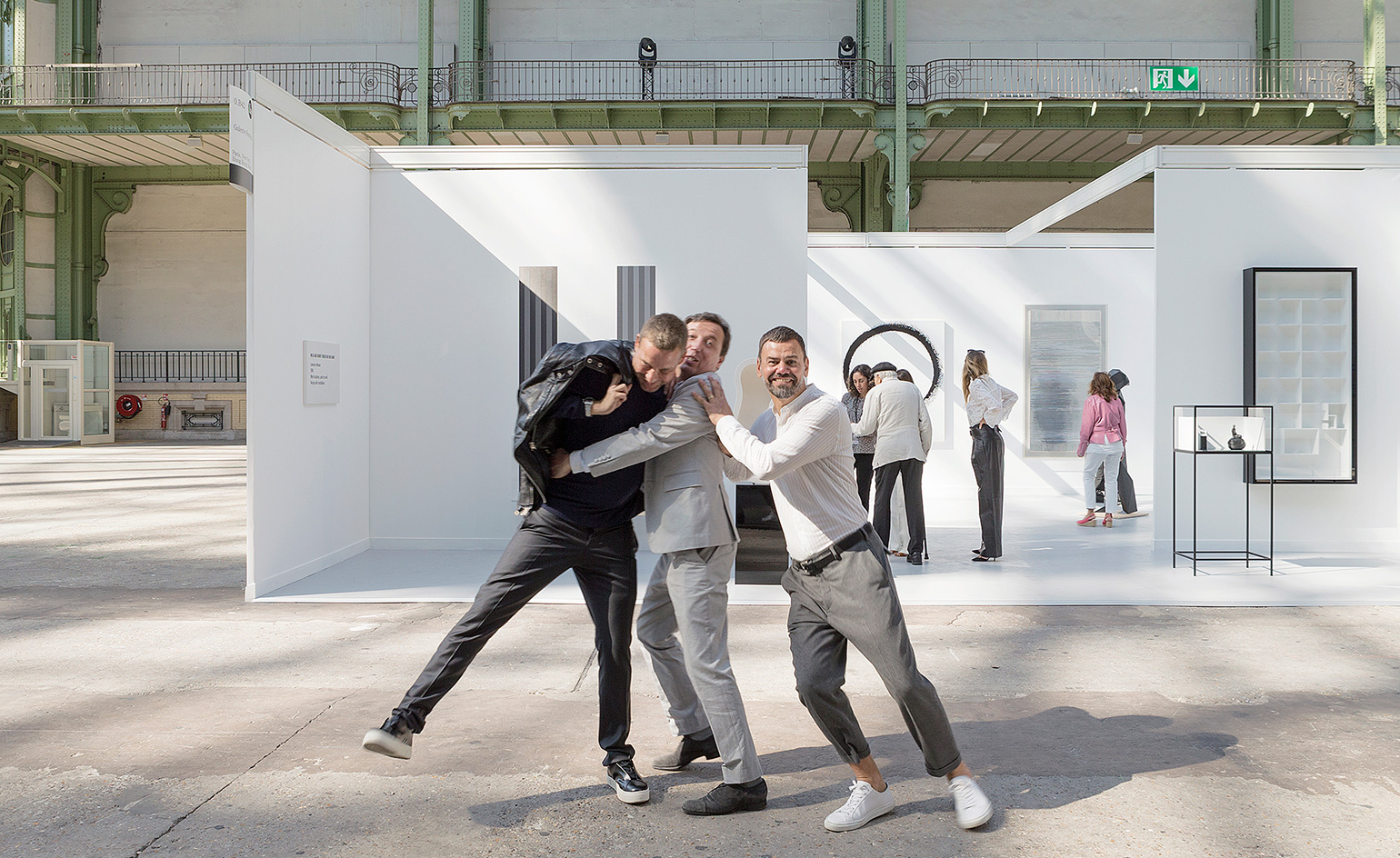
Michael Elmgreen (left) and Ingar Dragset (right), with Emmanuel Perrotin, in the Grand Palais
While more meta than their now-legendary Prada Marfa store simulacrum in the Texan desert or even the faux modernist airport at Plateau, Samsung Museum of Art in Seoul, the Perrotin booth tackles the same hypothesis of isolating a space of specific cultural currency to better understand how we perceive and behave around it. ‘You don’t really notice a Prada store if it’s in Paris or New York or a normal shopping environment. But if you see it in the desert, you actually start to think about what it is,’ Elmgreen continues. ‘Here, isolated, it’s actually quite beautiful and intimate, and you see the whole intention of a gallery wanting to present their artists in the best way – to make a statement. But when you have 200 statements side-by-side, of course you can’t look at it the same way.’
To size up the booth’s compact scale, roughly 100 sq m within the Grand Palais’ vast nave, is to draw comparisons to Monumenta, where an artist is invited to inhabit the space's wall-to-wall, floor-to-glass ceiling. ‘It is also about not letting these spaces repress you. You can do less-is-more,’ maintains Elmgreen.
Being accepted to stage a one-off project inside the most revered exhibition space in all of Paris attests to a collective level of respect achieved by the two artists, as well as Emmanuel Perrotin. Approval from the Grand Palais came less than three months ago, with FIAC giving its blessing. When the fair officially opens on 20 October, Perrotin’s booth will boast the same arrangement of works, even if some have sold in the interim. Indeed, collectors were sniffing around on Saturday before the crowd descended, with particular attention paid to the duo’s self-referential maquettes, such as Study for Van Gogh’s Ear in flawless white marble, which more closely resembled a Brâncuși than an upright swimming pool. Unlike the ongoing existence of Prada Marfa, the booth’s speedy dismantling means that Elmgreen & Dragset are resigned to the idea that the project carries the whiff of ‘a rumour’. But to reinforce their objective, two official photographs documenting the ‘before’ and ‘after’ will become evidence of the undertaking – framed, of course, as art.
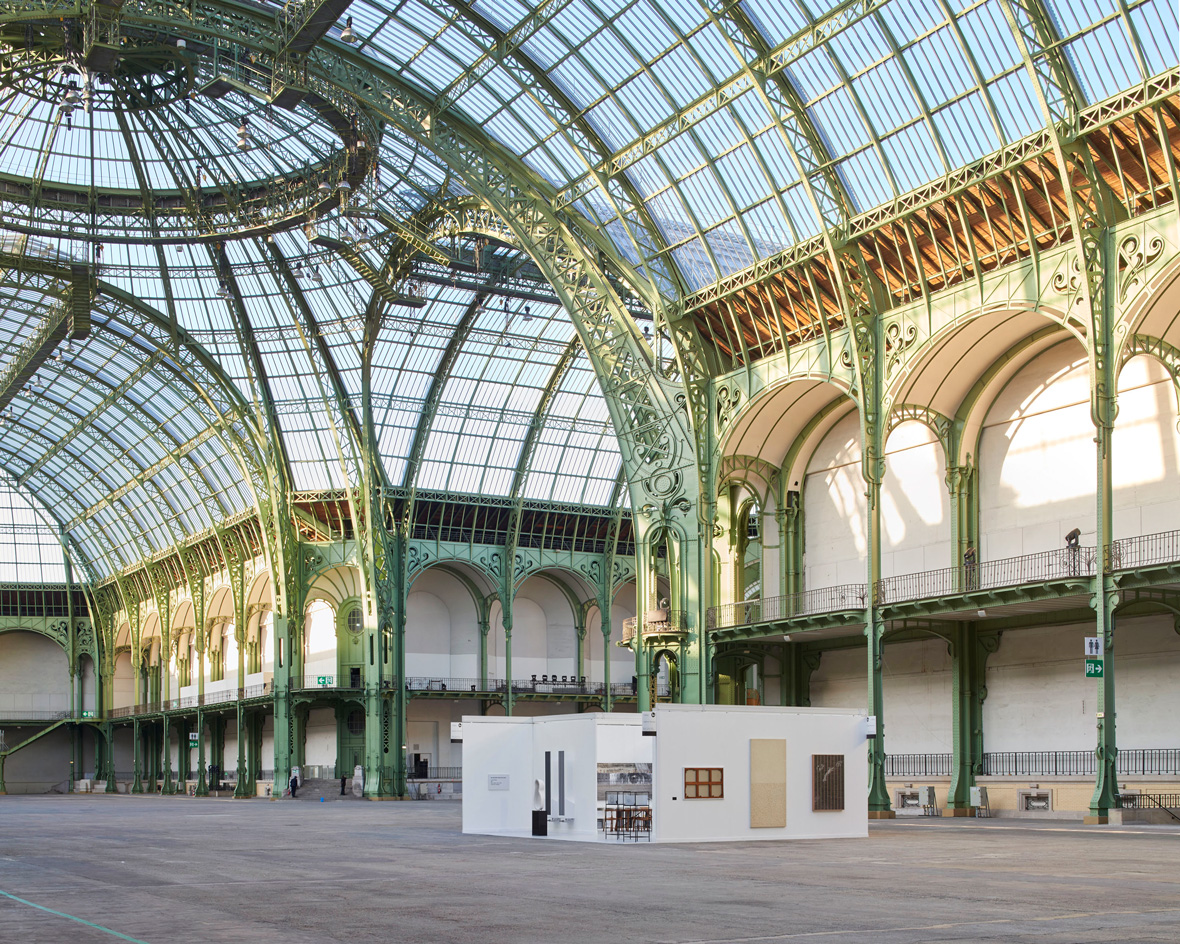
The booth’s compact scale, roughly 100 sq m, sits within the Grand Palais’ vast nave, drawing attention to the lack of stands around it
INFORMATION
FIAC is on view from 20–23 October. For more information, visit the Galerie Perrotin website, or the FIAC website
Wallpaper* Newsletter
Receive our daily digest of inspiration, escapism and design stories from around the world direct to your inbox.
-
 All-In is the Paris-based label making full-force fashion for main character dressing
All-In is the Paris-based label making full-force fashion for main character dressingPart of our monthly Uprising series, Wallpaper* meets Benjamin Barron and Bror August Vestbø of All-In, the LVMH Prize-nominated label which bases its collections on a riotous cast of characters – real and imagined
By Orla Brennan
-
 Maserati joins forces with Giorgetti for a turbo-charged relationship
Maserati joins forces with Giorgetti for a turbo-charged relationshipAnnouncing their marriage during Milan Design Week, the brands unveiled a collection, a car and a long term commitment
By Hugo Macdonald
-
 Through an innovative new training program, Poltrona Frau aims to safeguard Italian craft
Through an innovative new training program, Poltrona Frau aims to safeguard Italian craftThe heritage furniture manufacturer is training a new generation of leather artisans
By Cristina Kiran Piotti
-
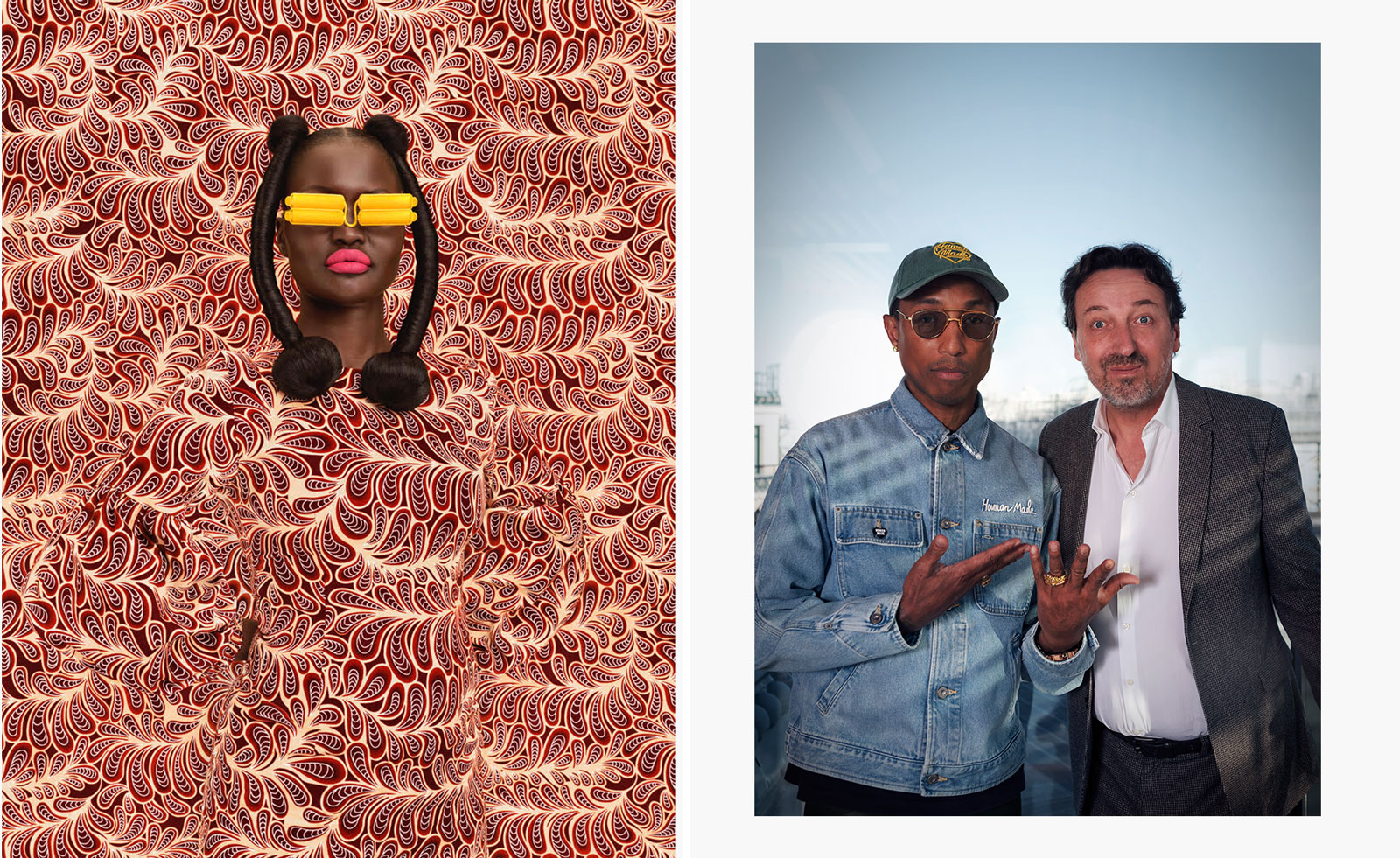 ‘The Black woman endures a gravity unlike any other’: Pharrell Williams explores diverse interpretations of femininity in Paris
‘The Black woman endures a gravity unlike any other’: Pharrell Williams explores diverse interpretations of femininity in ParisPharrell Williams returns to Perrotin gallery in Paris with a new group show which serves as an homage to Black women
By Amy Serafin
-
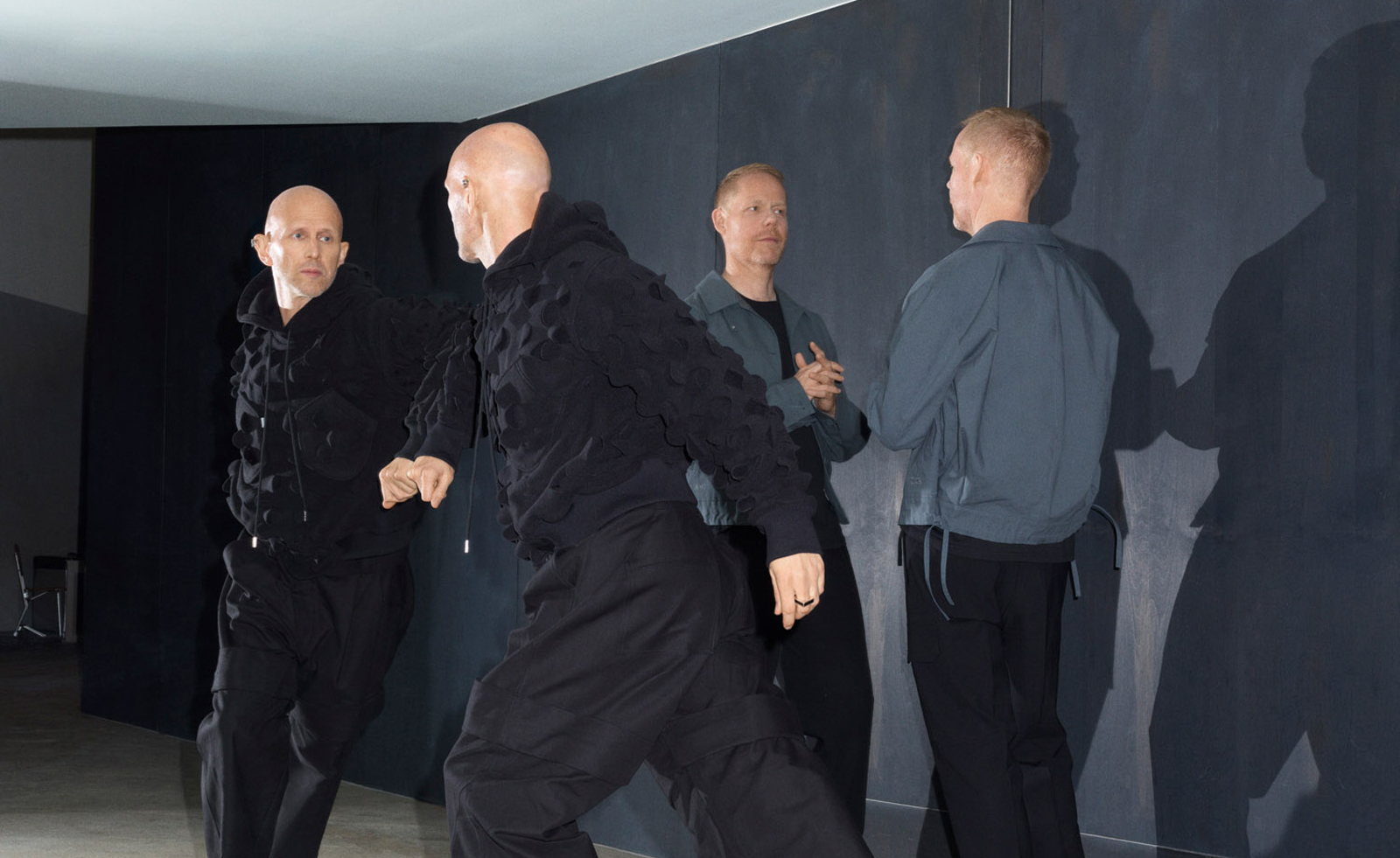 Year in review: top 10 art and culture interviews of 2024, as selected by Wallpaper’s Hannah Silver
Year in review: top 10 art and culture interviews of 2024, as selected by Wallpaper’s Hannah SilverFrom Antony Gormley to St. Vincent and Mickalene Thomas – art & culture editor Hannah Silver looks back on the creatives we've most enjoyed catching up with during 2024
By Hannah Silver
-
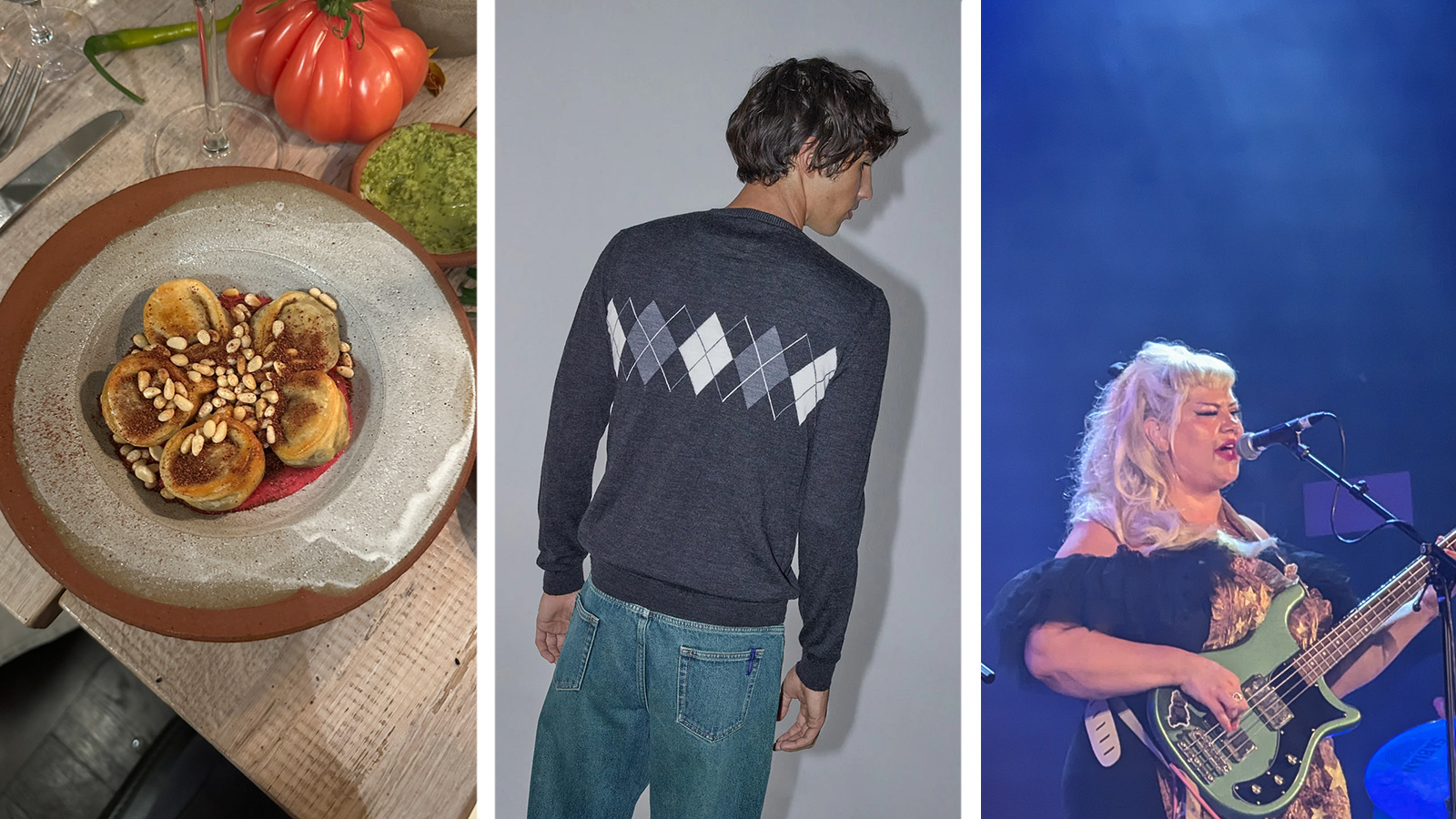 Out of office: what the Wallpaper* editors have been doing this week
Out of office: what the Wallpaper* editors have been doing this weekInvesting in quality knitwear, scouting a very special pair of earrings and dining with strangers are just some of the things keeping the Wallpaper* team occupied this week
By Bill Prince
-
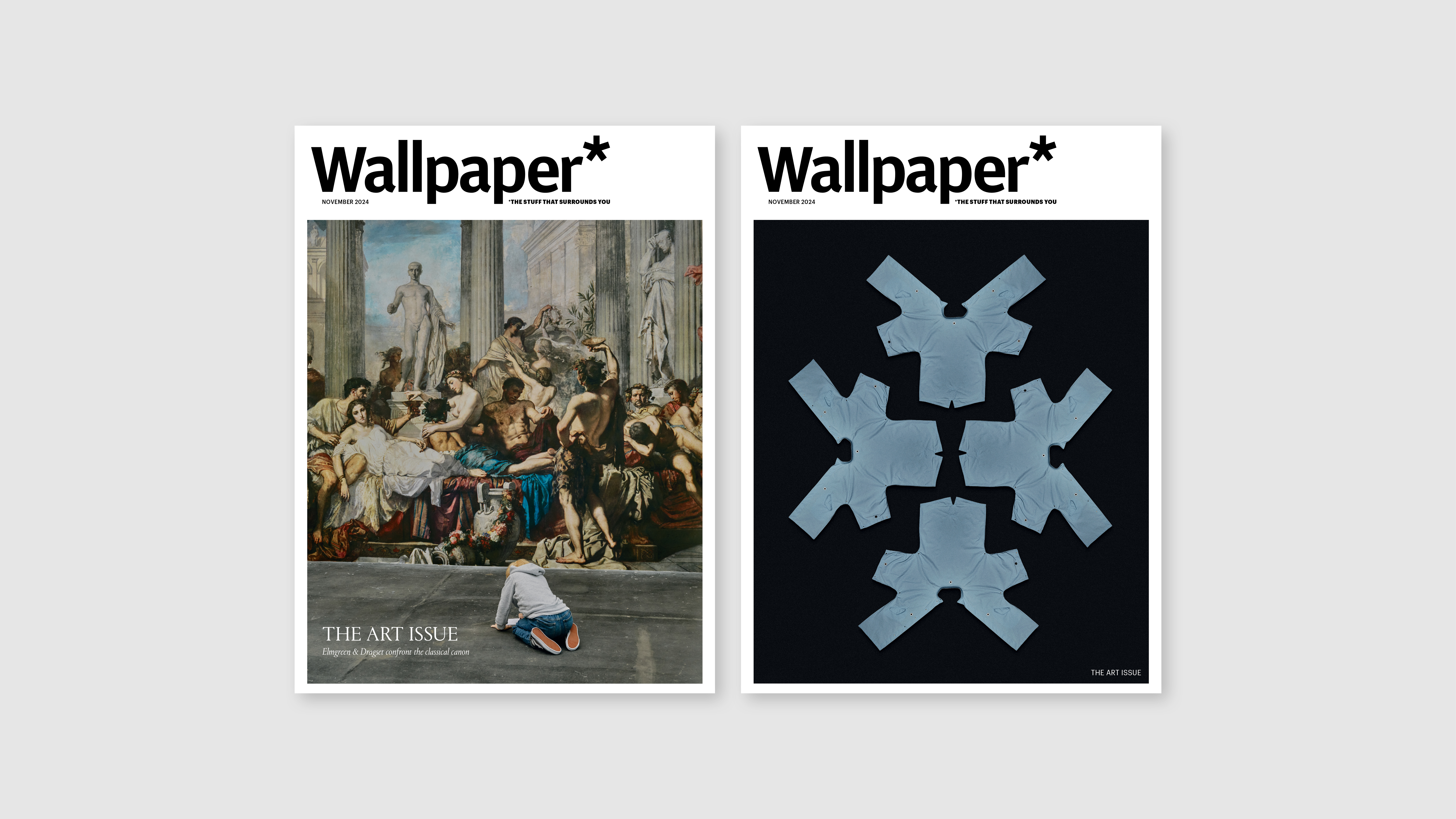 Discover Wallpaper* November 2024: The Art Issue
Discover Wallpaper* November 2024: The Art IssueThe art special is on sale now. Confront the classical canon with Elmgreen & Dragset, get down with LoveFrom x Moncler, and wear art on your sleeve with Christiane Kubrick x JW Anderson
By Bill Prince
-
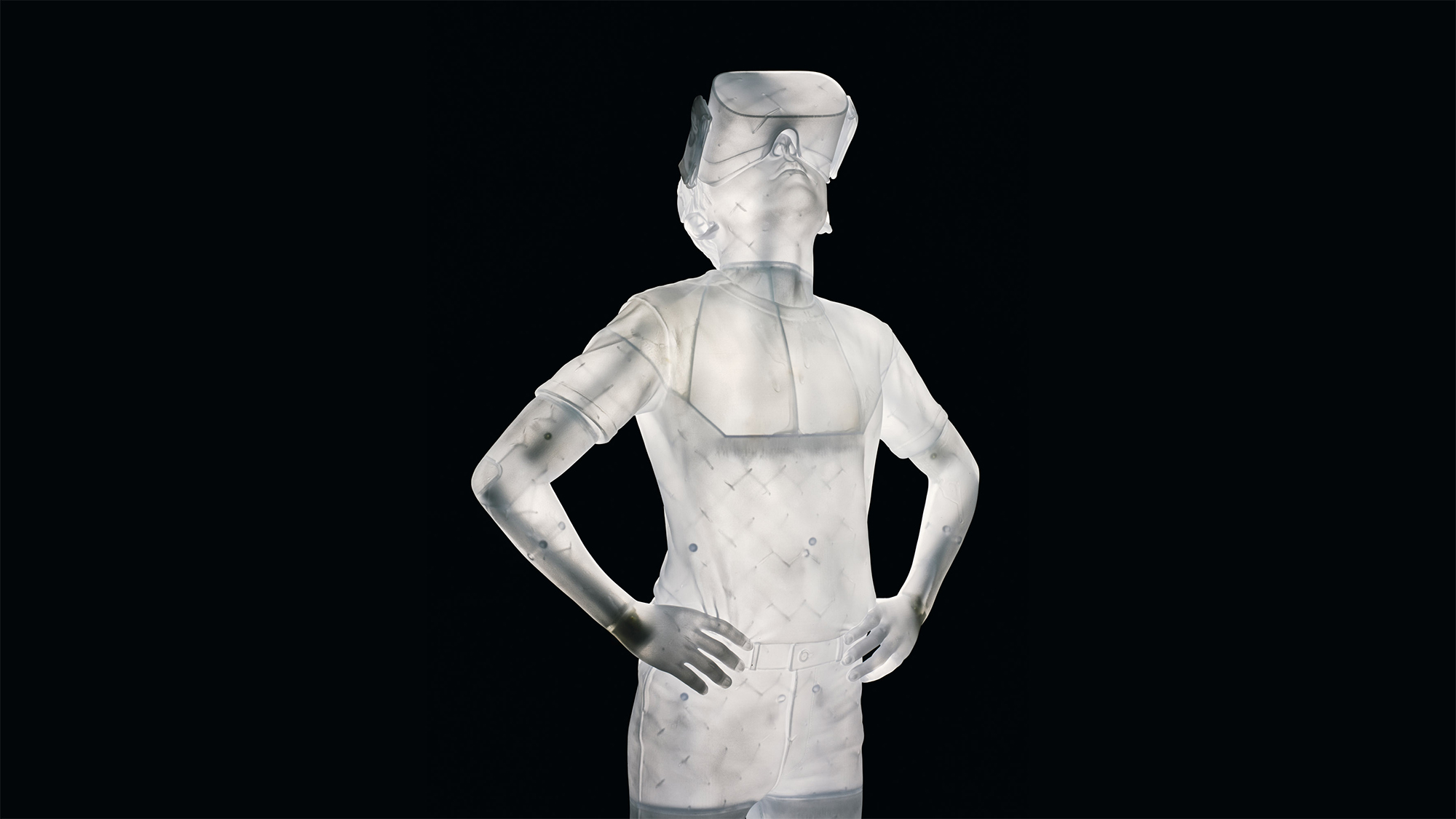 Elmgreen & Dragset explore contemporary masculinity in Paris
Elmgreen & Dragset explore contemporary masculinity in ParisWe visit Elmgreen & Dragset at their Berlin studio ahead of new exhibition ‘L’Addition’ at Paris’ Musée d’Orsay, a subversive take on the classical form
By Hannah Silver
-
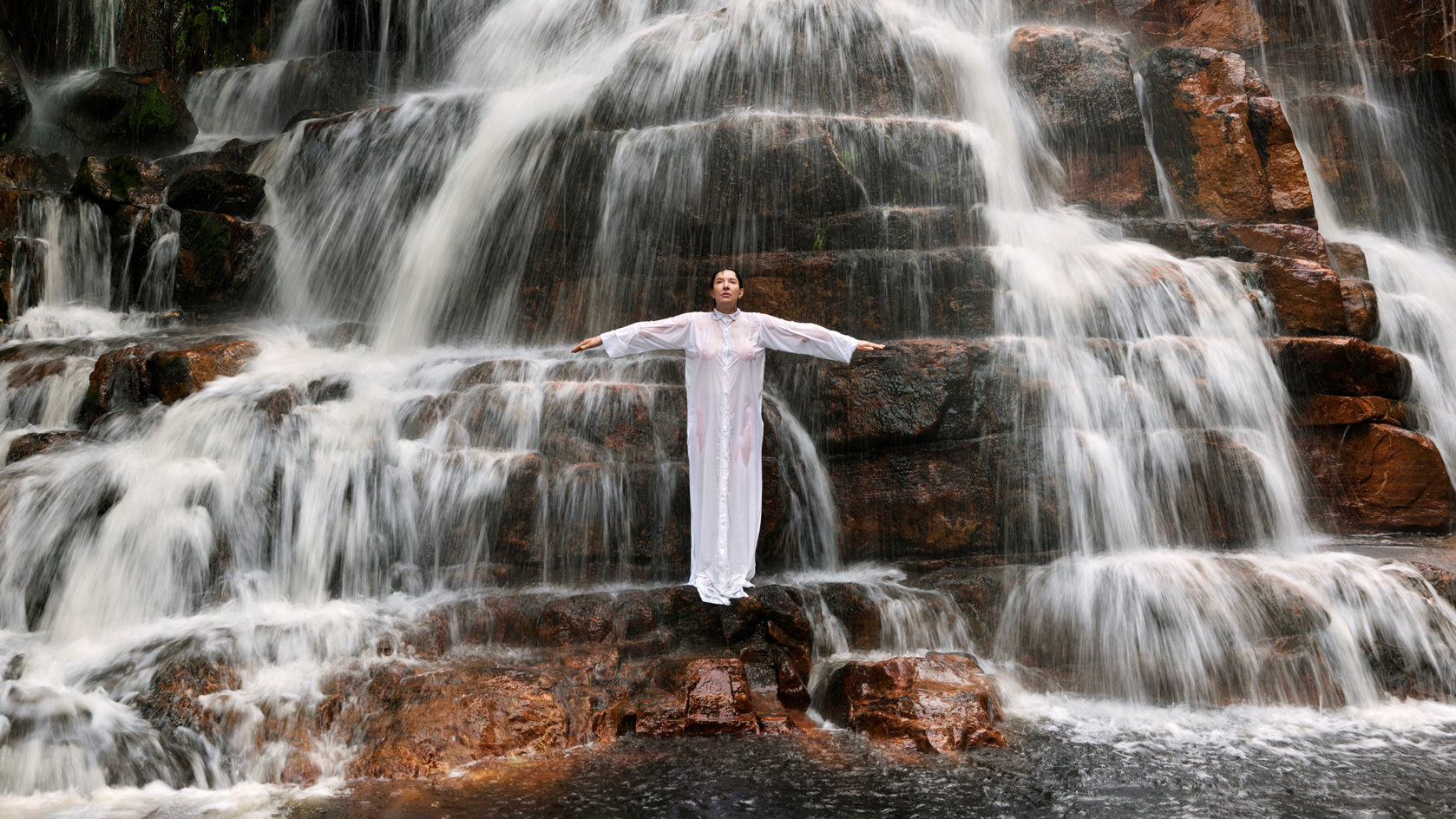 EXPO Chicago 2023 is an indoor-outdoor art extravaganza, from witches to unicorns
EXPO Chicago 2023 is an indoor-outdoor art extravaganza, from witches to unicornsAs the landmark 10th edition of EXPO Chicago kicks off, Jessica Klingelfuss explores the fair and this citywide art spectacle, from Derrick Adams’ unicorns to a witch-themed group show
By Jessica Klingelfuss
-
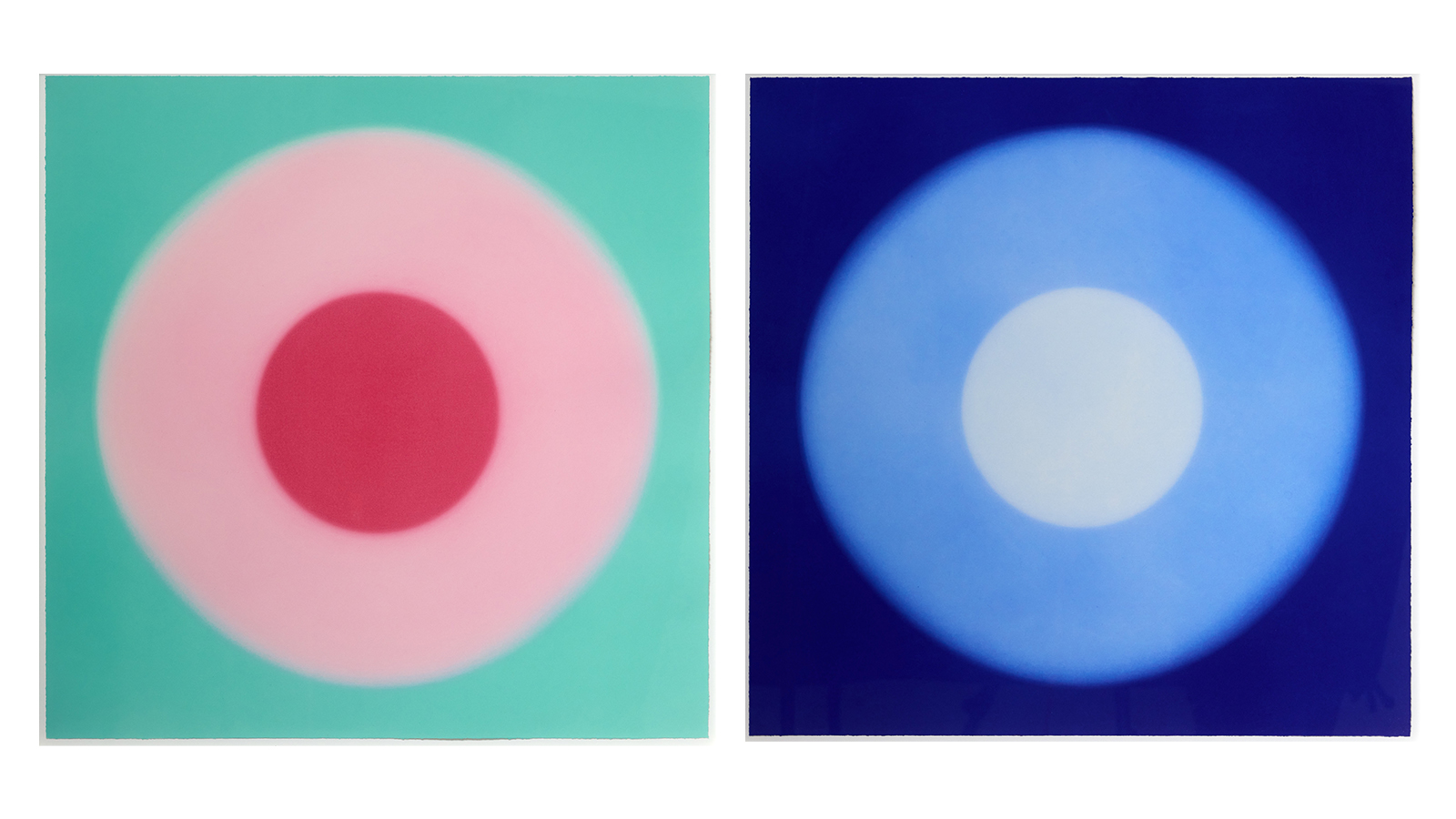 London Original Print Fair 2023: 10 prints on our radar, from Brian Eno to Tracey Emin
London Original Print Fair 2023: 10 prints on our radar, from Brian Eno to Tracey EminAs London Original Print Fair 2023 kicks off (until 2 April 2023), explore the 10 prints on our wish list this year, from Brian Eno to Tracey Emin; Mona Hatoum to Harland Miller
By Harriet Lloyd-Smith
-
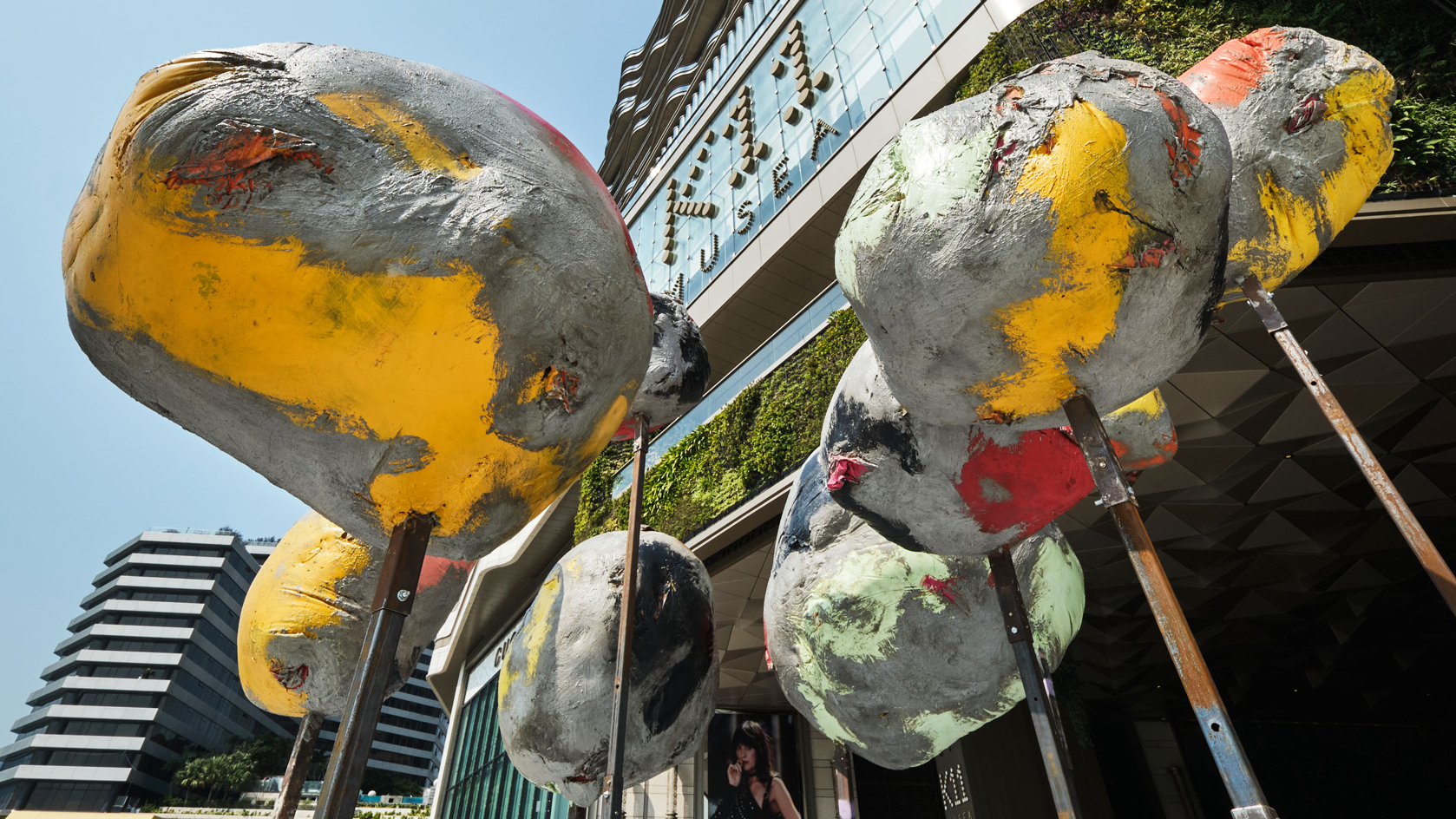 Art Basel Hong Kong 2023: can the city’s art scene bounce back?
Art Basel Hong Kong 2023: can the city’s art scene bounce back?Art Basel Hong Kong 2023 is about to kick off following years of restrictions. Catherine Shaw explores what we can expect in and around this year’s fair (23-25 March 2023), and whether Hong Kong can bounce back to reclaim the title of ‘Asia’s art hub’
By Catherine Shaw